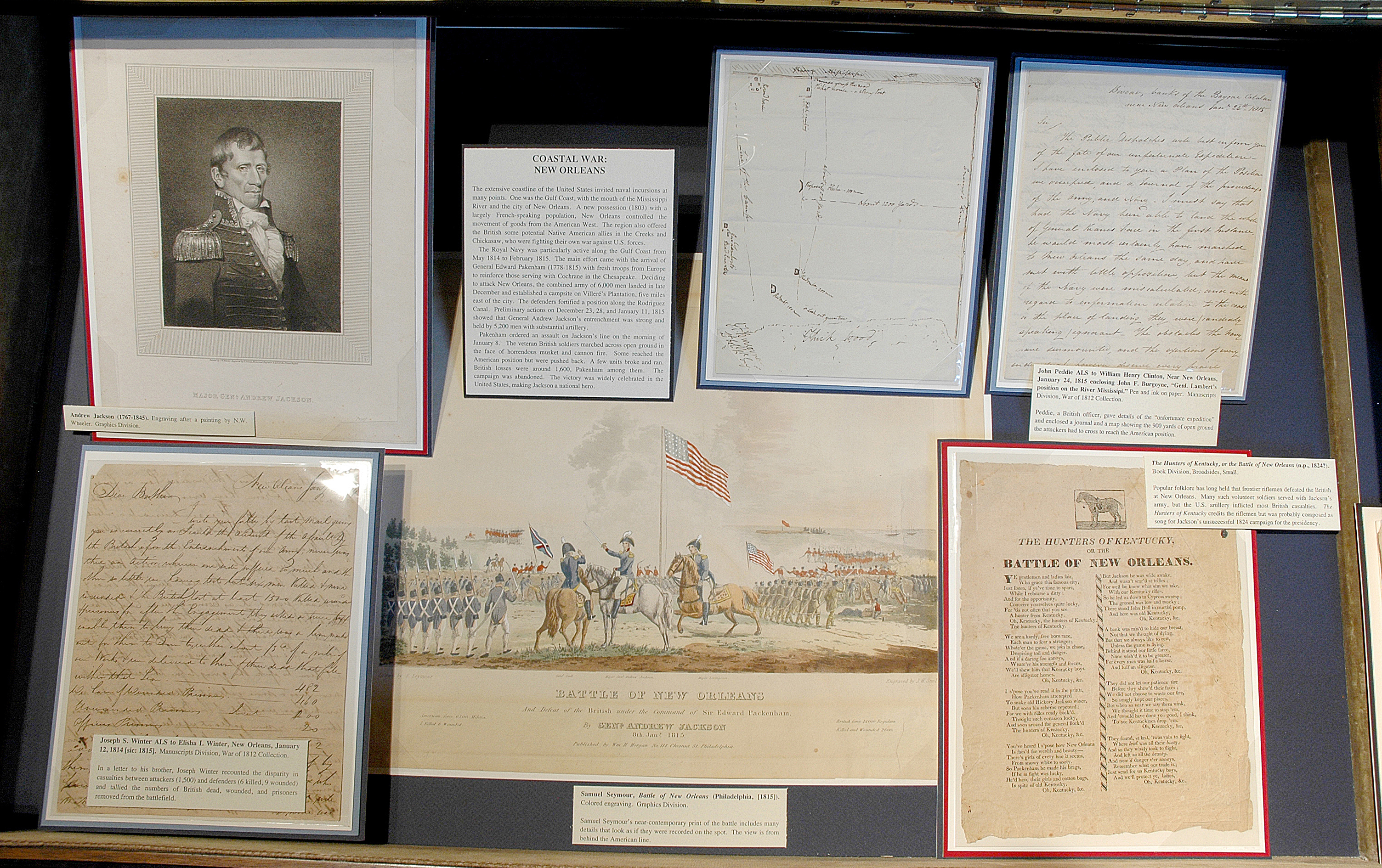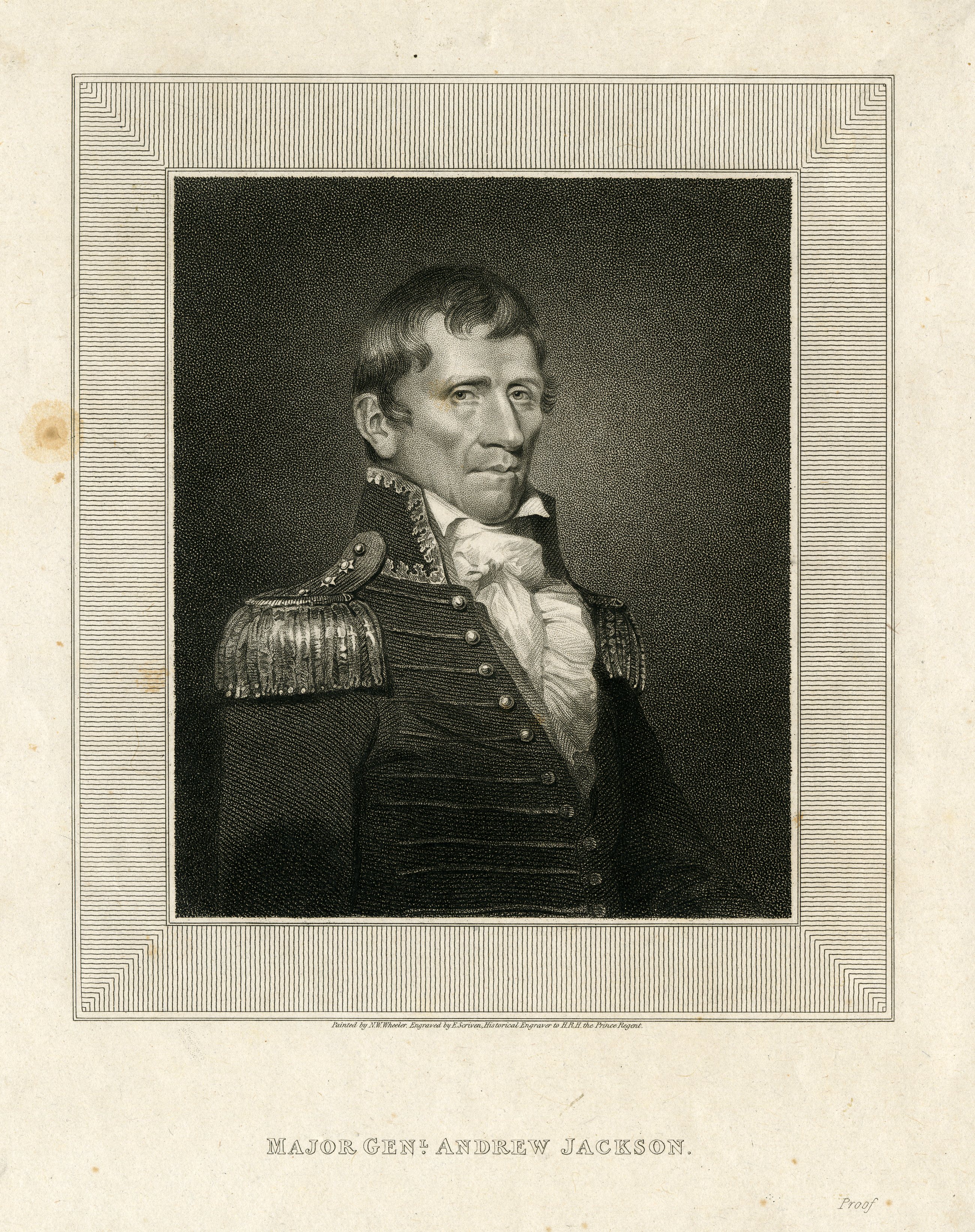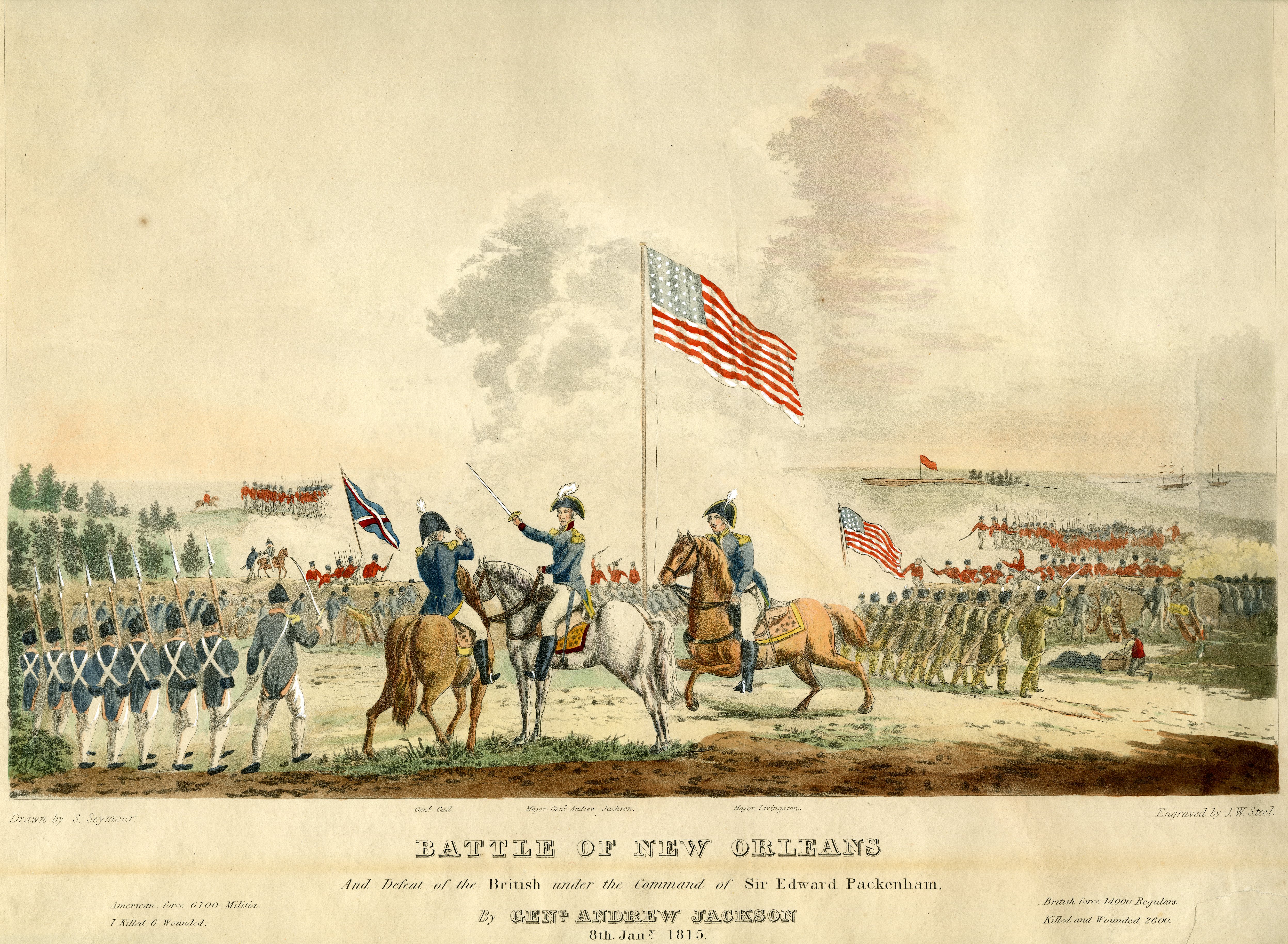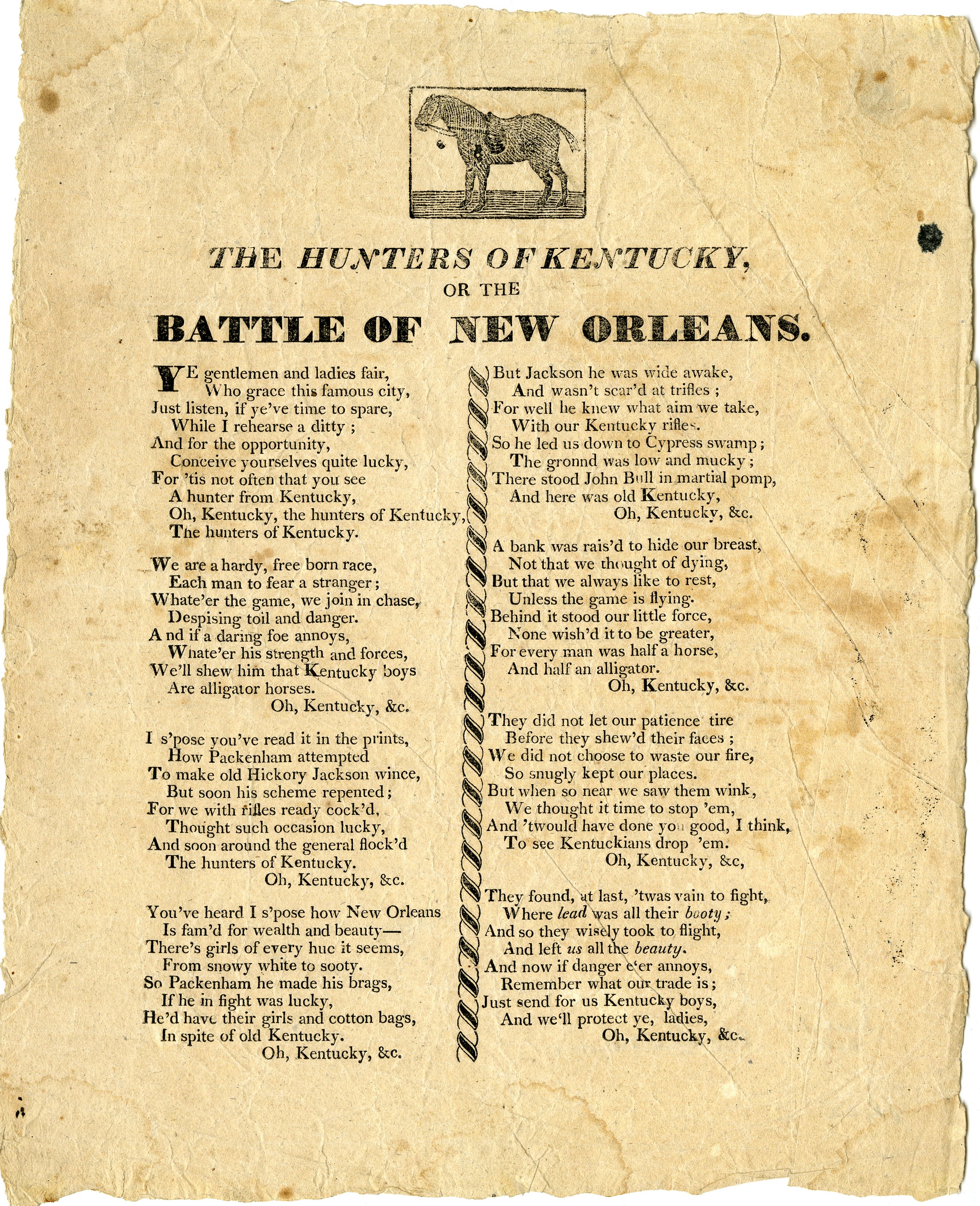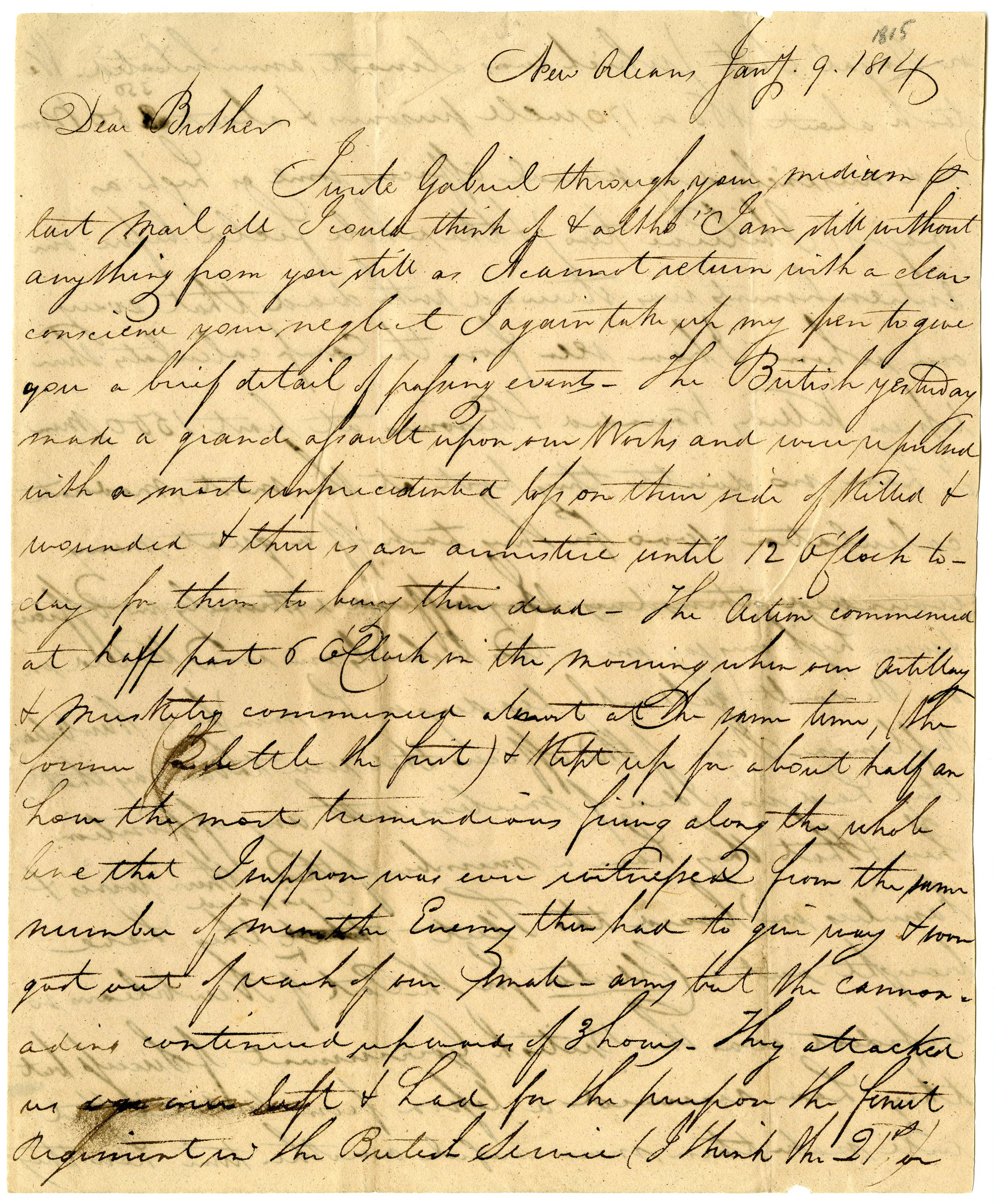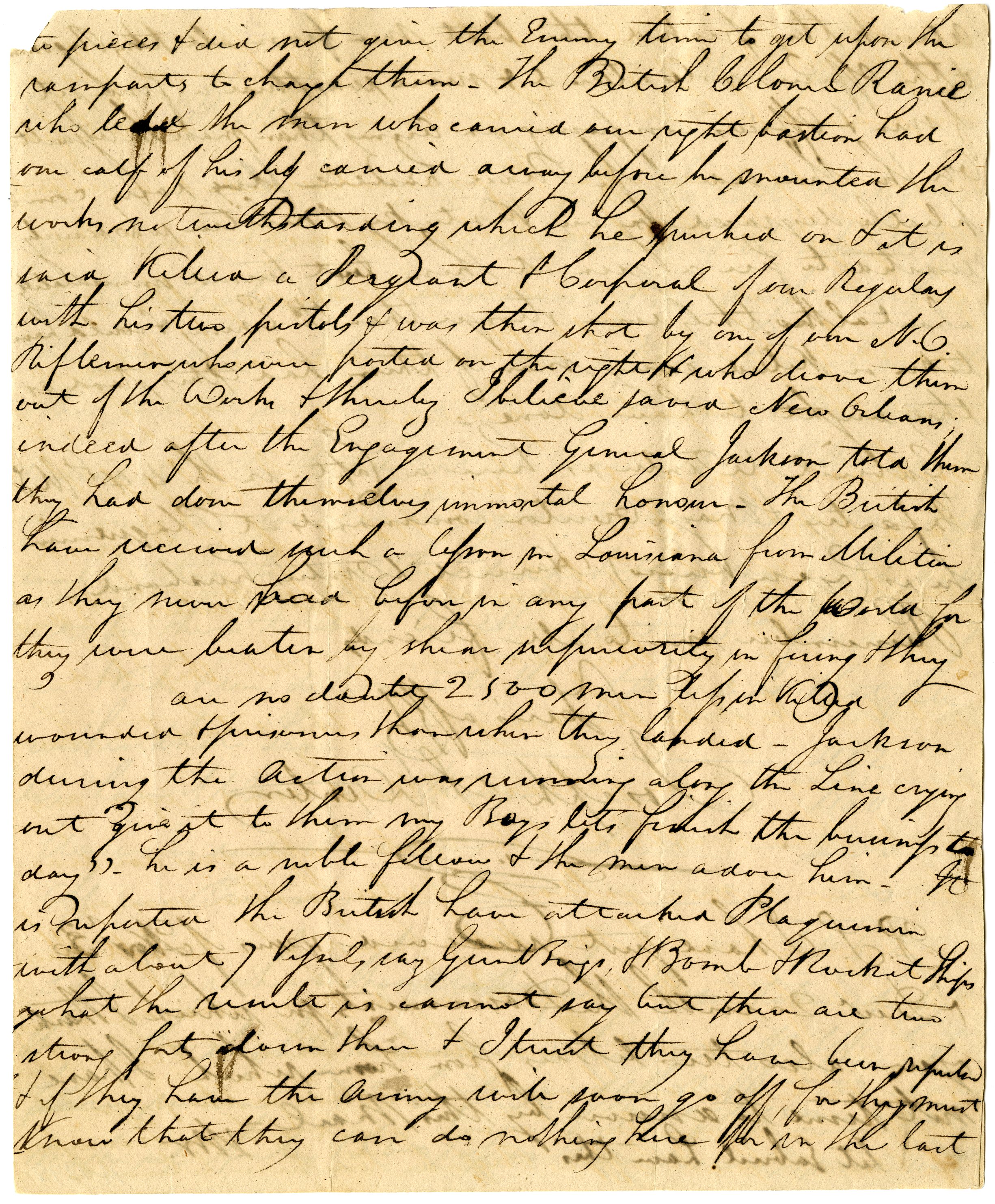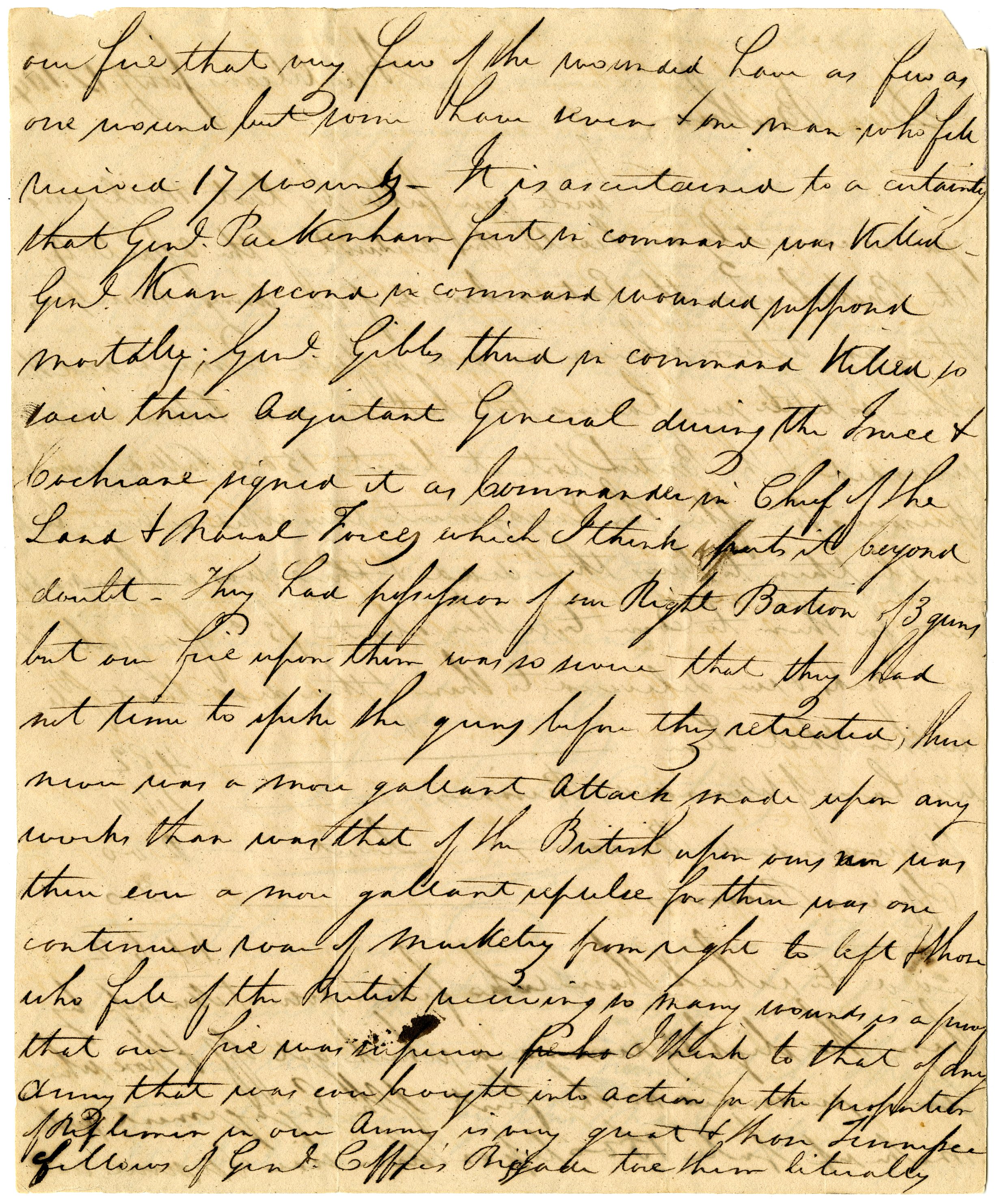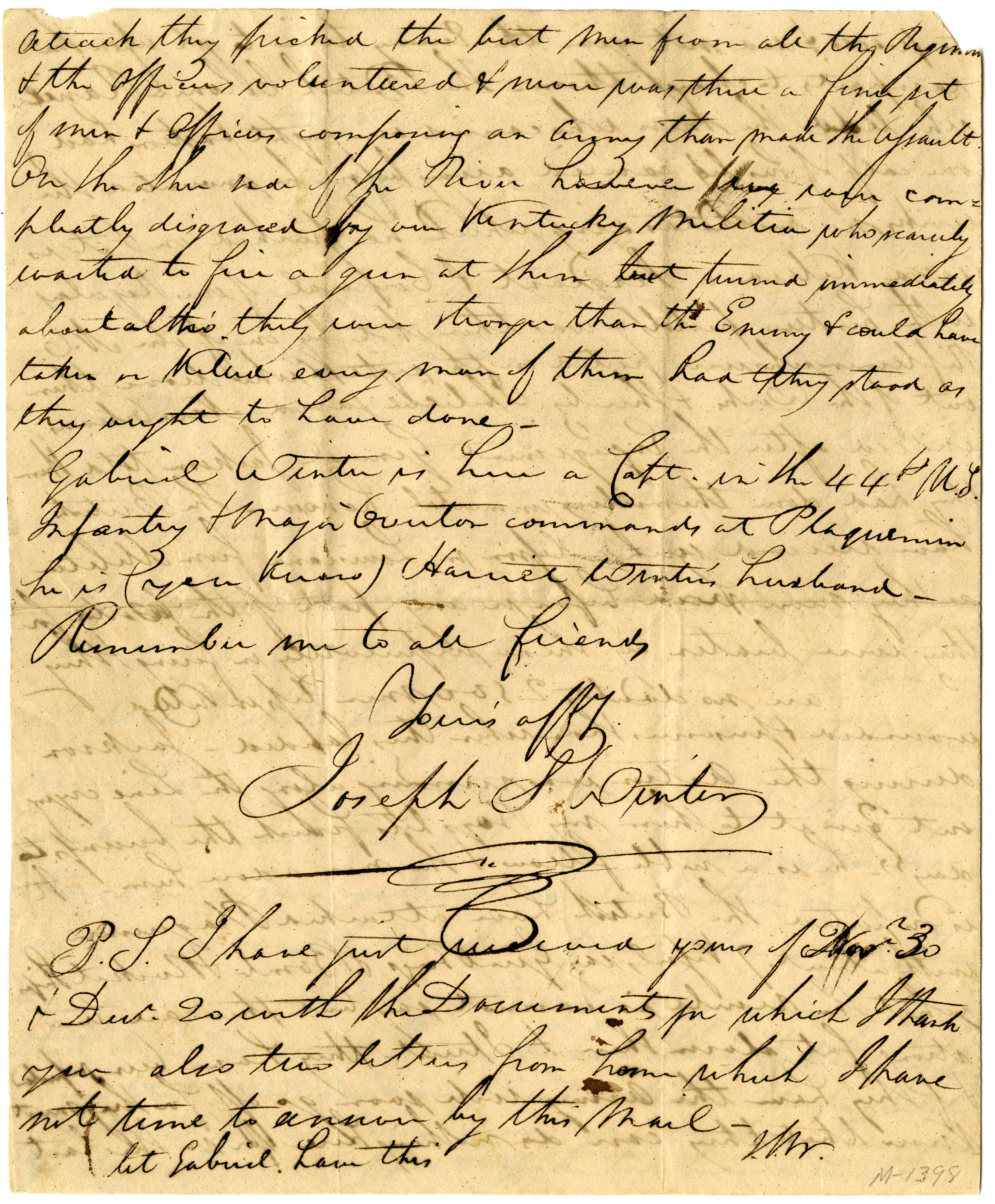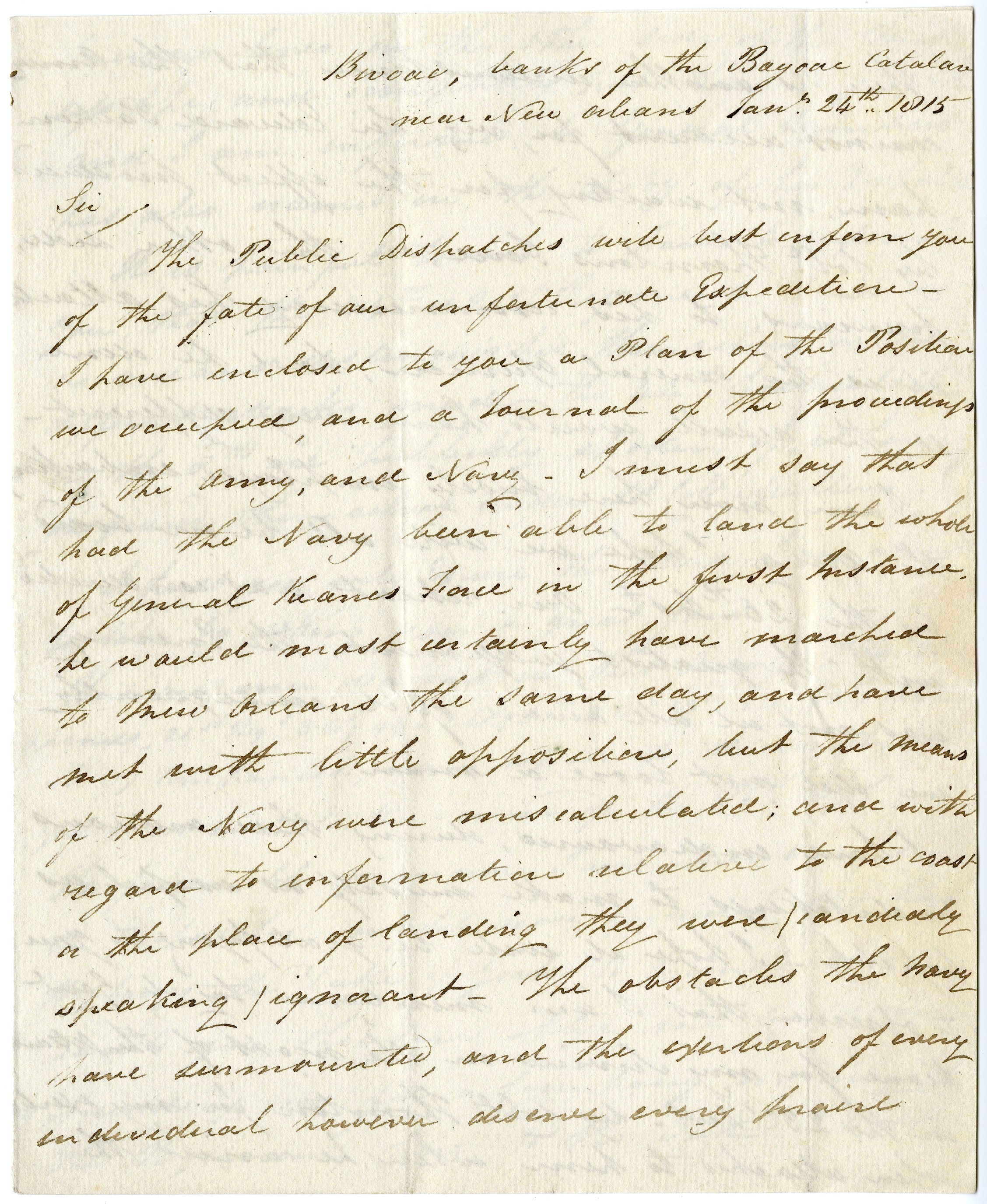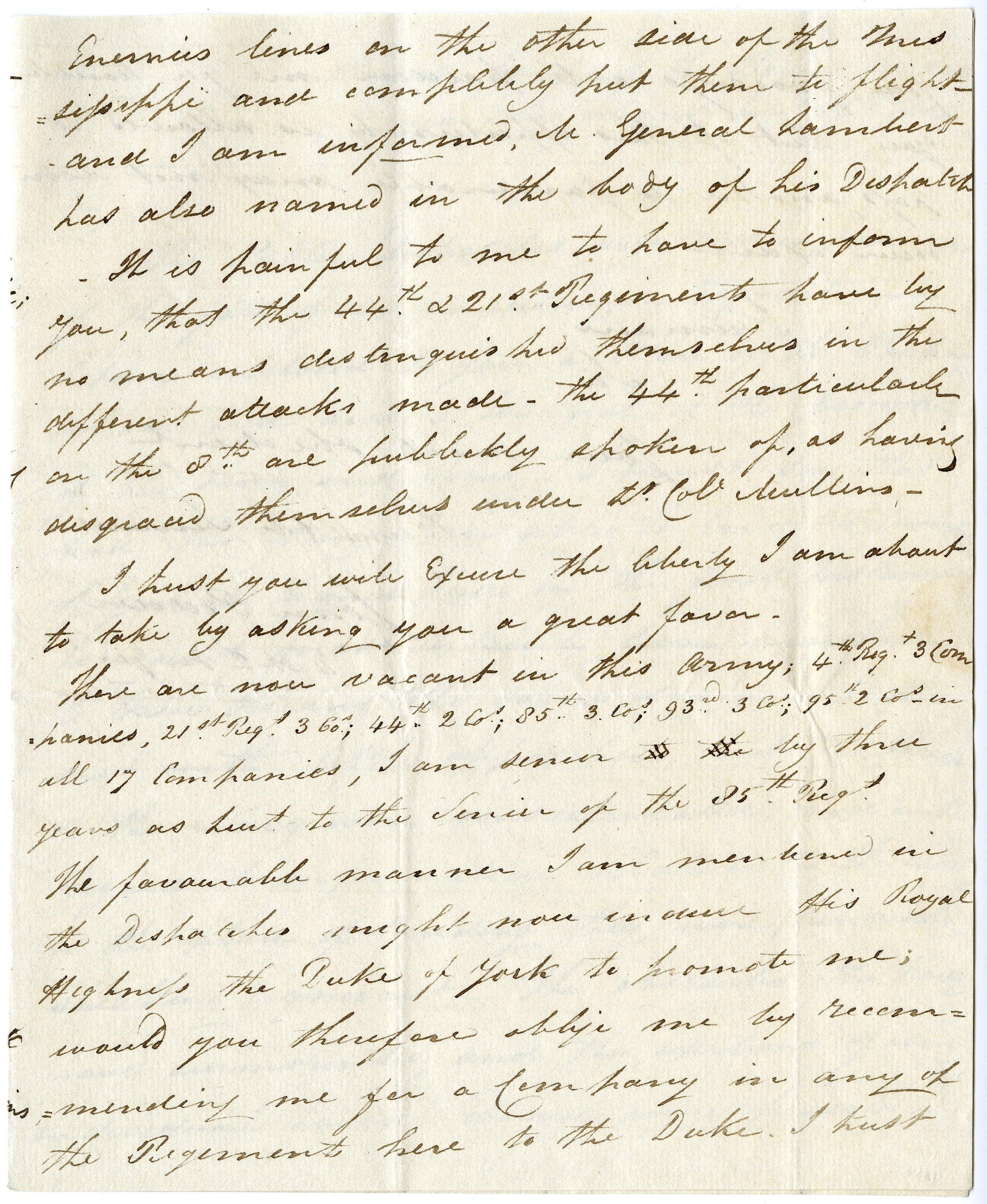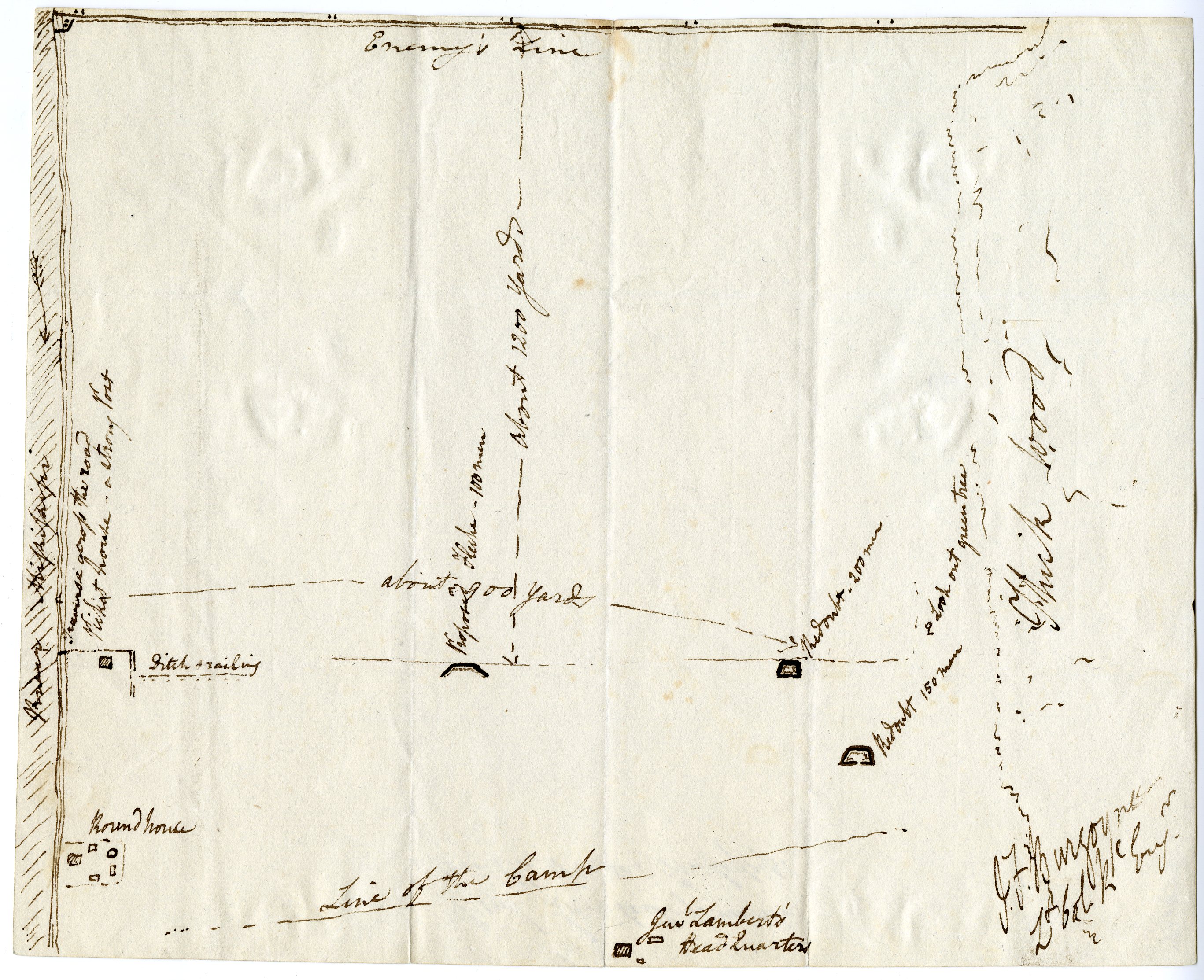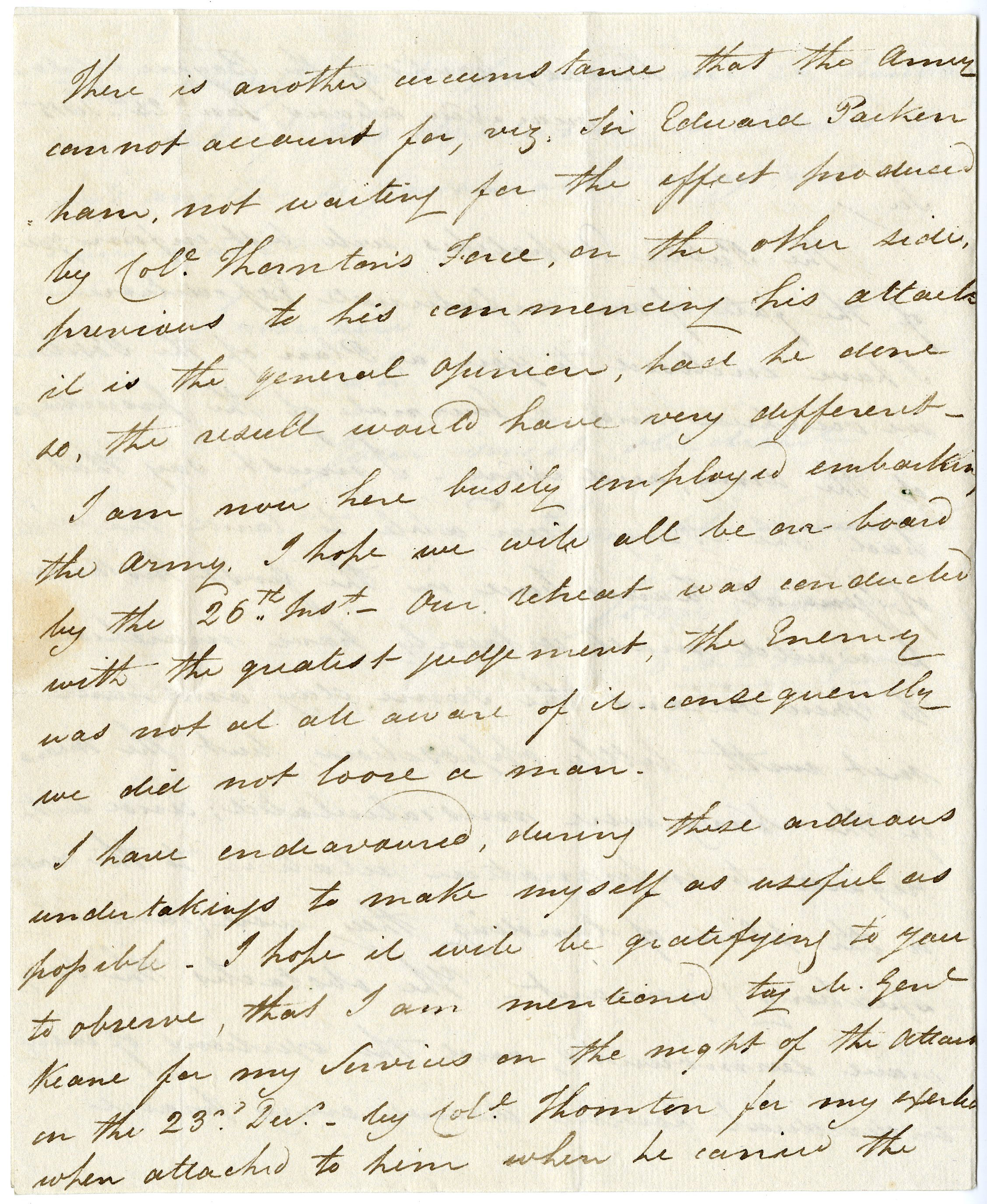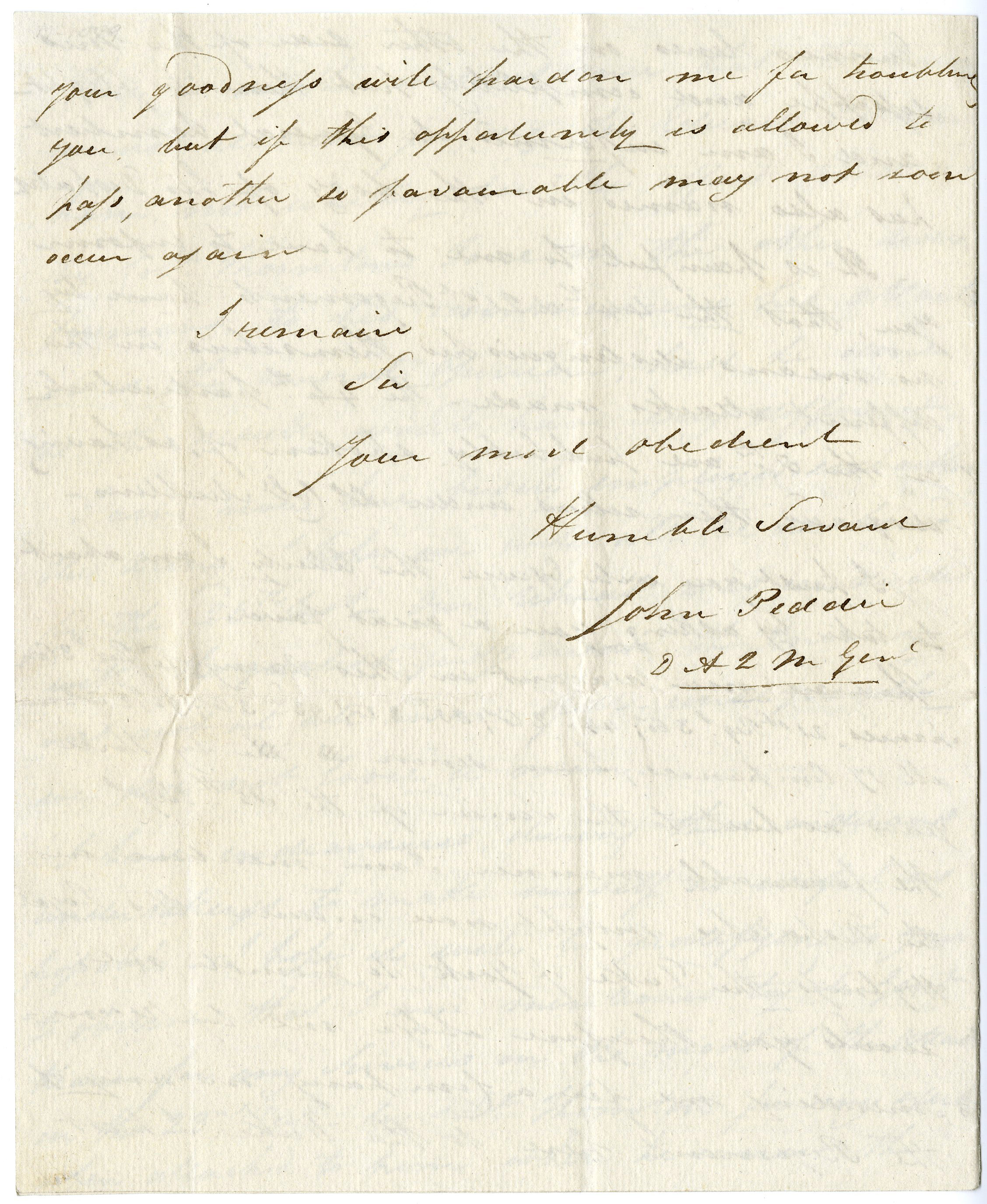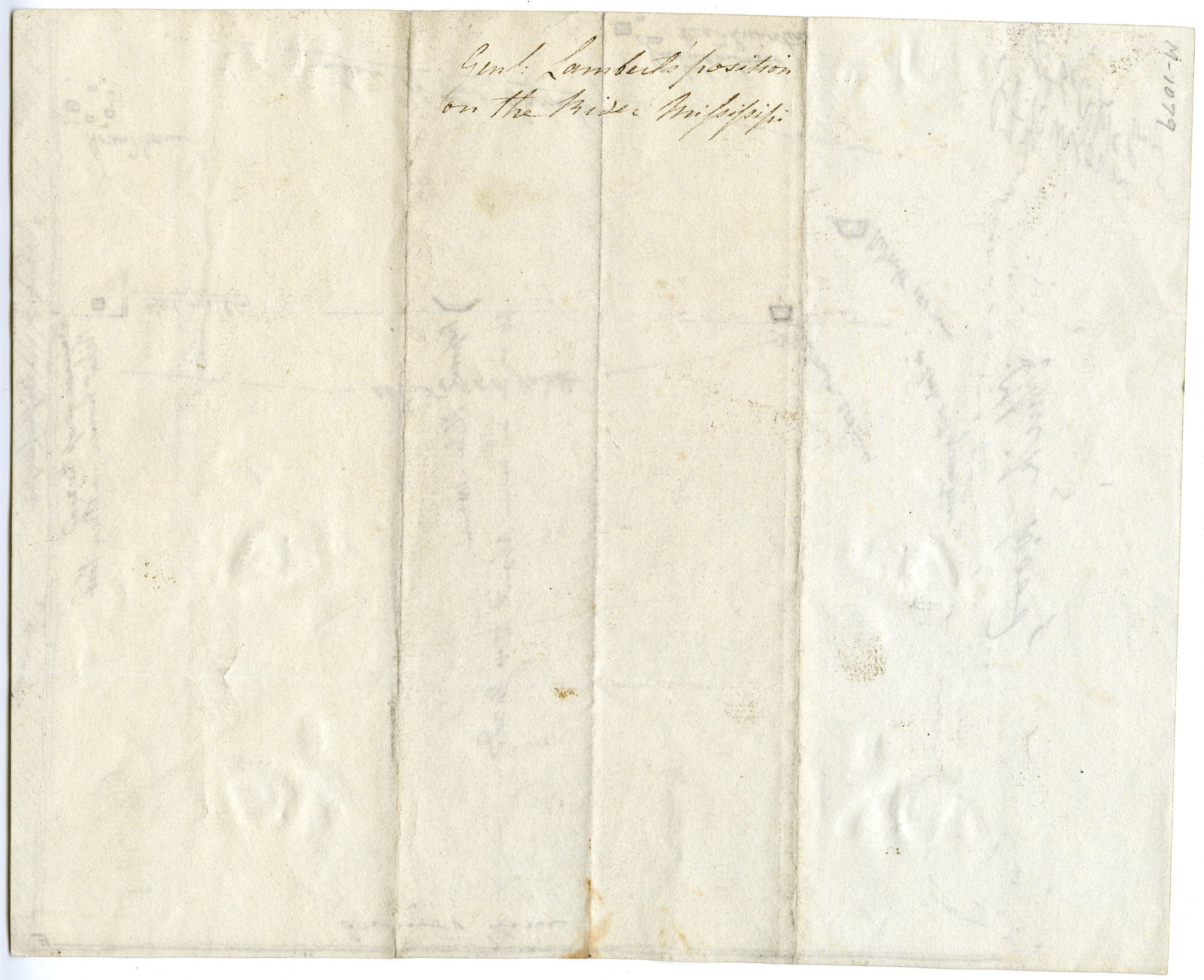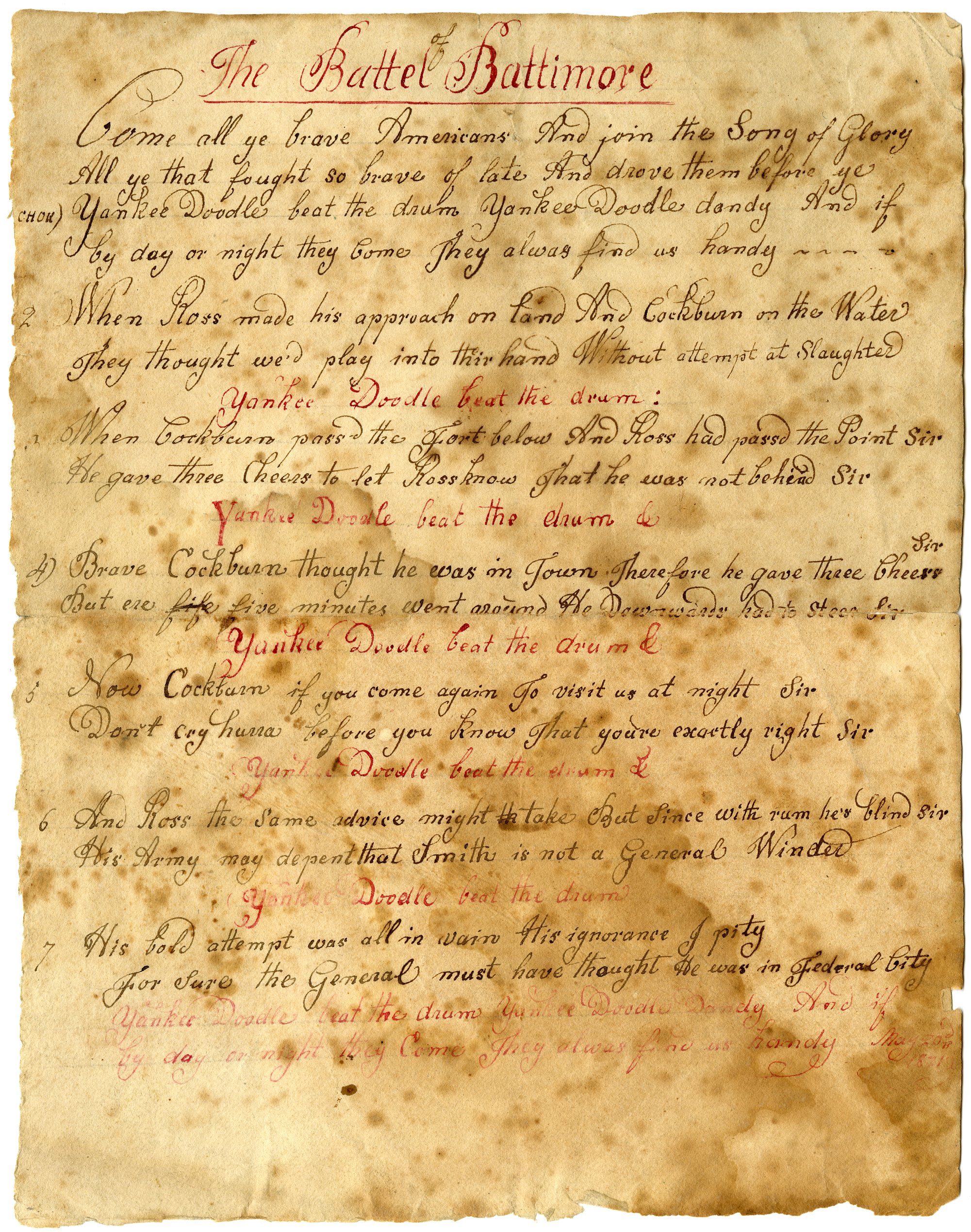The War of 1812: A Bicentennial Exhibition, Case 15
Case 15: Coastal War: New Orleans
The extensive coastline of the United States invited naval incursions at many points. One was the Gulf Coast, with the mouth of the Mississippi River and the city of New Orleans. A new possession (1803) with a largely French-speaking population, New Orleans controlled the movement of goods from the American West. The region also offered the British some potential Native American allies in the Creeks and Chickasaw, who were fighting their own war against U.S. forces.
The Royal Navy was particularly active along the Gulf Coast from May 1814 to February 1815. The main effort came with the arrival of General Edward Pakenham (1778-1815) with fresh troops from Europe to reinforce those serving with Cochrane in the Chesapeake. Deciding to attack New Orleans, the combined army of 6,000 men landed in late December and established a campsite on Villeré’s Plantation, five miles east of the city. The defenders fortified a position along the Rodriguez Canal. Preliminary actions on December 23, 28, and January 1, 1815 showed that General Andrew Jackson’s entrenchment was strong and held by 5,200 men with substantial artillery.
Pakenham ordered an assault on Jackson’s line on the morning of January 8. The veteran British soldiers marched across open ground in the face of horrendous musket and cannon fire. Some reached the American position but were pushed back. A few units broke and ran. British losses were around 1,600, Pakenham among them. The campaign was abandoned. The victory was widely celebrated in the United States, making Jackson a national hero.
The Hunters of Kentucky, or the Battle of New Orleans (n.p., 1824?). Book Division, Broadsides, Small.
Popular folklore has long held that frontier riflemen defeated the British at New Orleans. Many such volunteer soldiers served with Jackson’s army, but the U.S. artillery inflicted most British casualties. The Hunters of Kentucky credits the riflemen but was probably composed as song for Jackson’s unsuccessful 1824 campaign for the presidency.
Joseph S. Winter ALS to Elisha I. Winter, New Orleans, January 12, 1814 [sic: 1815]. Manuscripts Division, War of 1812 Collection.
In a letter to his brother, Joseph Winter recounted the disparity in casualties between attackers (1,500) and defenders (6 killed, 9 wounded) and tallied the numbers of British dead, wounded, and prisoners removed from the battlefield.
William Hull ALS to James Taylor, Detroit, July 9, 1812.Manuscripts Division, War of 1812 Collection.
Hull’s Detroit campaign was a logistical nightmare. Lacking naval control of Lake Erie, the army relied for supplies and communications on a wretched road through Ohio’s Black Swamp and along the Detroit River, where the British and Indians could land to attack convoys. Many of the army’s supplies were moved by packhorses.

